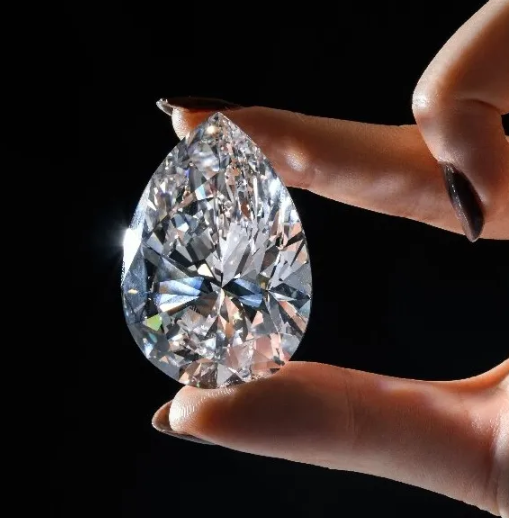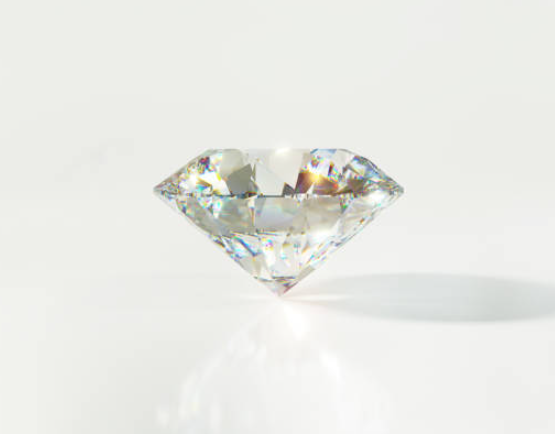Diamonds are not always valuable or seen as the most valuable gemstones, thanks to the efforts of a diamond company in South Africa that knows very well how to market diamonds.
So, when did diamonds become precious gemstones?
A Brief History of Diamonds
Diamonds have a long history and are closely related to human history. However, diamonds are much older than we are and are basically forged deep within the earth.
Specifically, diamonds form deep in the earth’s crust, about 90 miles or 145 kilometers below the mantle. At these depths, the rock is exposed to extremely high temperature conditions of up to 2000 degrees Fahrenheit (1093 degrees Celsius).

Therefore, diamonds are formed at these depths and under very high-pressure conditions. However, due to the fragility of the Earth’s crust and mantle and the resulting fast-moving magma forced to gush out from the depths through violent volcanic eruptions, diamonds are carried to or near the surface, where they can be easily mined.
Due to the migration effects of the plates that form the continents and the different movements that occur in the crust and mantle, very small fragments of diamonds are often detected in the rocks that make tectonic plates. After the plates subduct into the mantle, they return to the Earth’s surface and are easily extracted.
As mentioned above, diamonds have been around for too long, with the earliest discoveries dating back to India in the 4th century BC. However, the earliest or youngest diamond deposits are believed to have formed about 9 million years ago.
It is believed that most of the earliest diamonds were transported across the country through a series of networks and trade routes linking India and China, also known as the Silk Road.
When diamonds were first discovered, they were highly valued for their brilliance and intensity and their ability to easily refract light. It is also used to engrave metals. At that time, diamonds were not set in metal rings, but were worn as ornaments and cutting tools. They can also serve as talismans to ward off evil spirits.
Others also believe that diamonds provide protection for fighters in battle. Then in the dark ages, diamonds became an important tool for providing some form of medical assistance because it was believed that diamonds could cure diseases and wounds if ingested.
Because diamonds and coal have a lot in common, they are both made of carbon atoms and formed in the same way, and the carbon atoms are arranged in a similar lattice structure. The main difference between coal and diamonds is that diamonds are formed deep in the earth’s crust, and in the Earth’s lithosphere, 90 to 240 miles below the earth’s crust, they are subjected to very high temperatures and pressures.
But until the 18th century, India was considered the only source of diamonds, so when the diamonds in the mines of India were all depleted, they began to look for alternative diamond sources, the first of which was discovered in Brazil in 1725.
At that time, supply could not meet the world’s needs. Later in 1866, a 15-year-old explorer, Erasmus Jacobs, made a major discovery on the banks of the Orange River in southern Africa.
Initially, Jacobs thought the sparkling gemstone he found was just another pebble, but as it turned out, he found a 21.25 ct diamond.
Then in 1871, another major discovery was made at Colesberg Kopje, a shallow mountain, of an 83.50 ct diamond. As a result of this discovery, the number of prospectors looking for diamonds in the area surged, eventually leading to the opening of the first large-scale mine, the Kimberley Mine.
With this discovery, diamonds poured in and the world supply increased dramatically; This has led to a significant drop in the value of diamonds.
Due to the increased supply of diamonds, the elite no longer considered diamonds to be rare, and diamonds replaced ordinary gemstones, especially colored gemstones.
As a result, rubies, emeralds, and sapphires are all popular choices for engagement rings, while diamonds take a back seat. High society especially favored colored gemstones.
But that changed in 1880, when the notorious Englishman Cecil John Rhodes founded De Beers Consolidated Mines Ltd.
This is a powerful initiative to control the supply of diamonds. De Beers was a great success, but then a problem arose, demand for gemstones declined, and by 1919, the value of diamonds had been lost by 50%.
When Did Diamonds Become Popular for Engagement Rings?
As mentioned above, while diamonds were only found in large quantities in India and later in South Africa, engagement rings became popular much earlier and were considered a symbol of wealth and status.

The history of diamond engagement rings dates back to the Middle Ages in 1215, when Pope Innocent III, one of the most powerful popes at the time, announced that there was a waiting period between engagement and wedding.
The engagement ring symbolizes the couple’s commitment before the big day. Soon after, the entire Roman government enforced this rule. However, the largest recorded diamond engagement was during the proposal of Marie of Burgundy and Archduke Maximilian of Austria in 1477.
While the idea of engagement rings is not new, and diamonds are rare, diamond engagement rings are reserved only for the upper class elite and royalty.
This was a trend over the years, but then things changed and diamond engagement rings became more mainstream after the 20s of the 60th century, and demand skyrocketed by 1990.
In the 20s, diamond engagement rings were uncommon or even unexpected, and in 30, only 1940% of first-time brides owned a diamond engagement ring. By 10, De Beers was selling diamonds as an indestructible symbol of love.
De Beers “Diamonds Lasting” Advertising Campaign in 1948
As mentioned above, from 1919 to the 20s of the 50th century, diamond demand declined significantly as De Beers sought to find a way to maintain control over diamond supply and price.
To that end, De Beers signed a service contract with an advertising agency called NW Ayer & Sons, thanks to one of their copywriters, Frances Gerety, who came up with the now-infamous slogan “Diamonds Are Forever” in 1948.
The slogan, along with several other advertising and marketing campaigns, created a new marketing environment that made diamonds enviable and more expensive, increasing demand for diamonds.
But that’s not all, De Beers is finally determined to break the mold, and to do that, they need to make diamonds seem affordable to everyone, including ordinary people.
So, to achieve this, they began filming black-and-white propaganda films in Cape Cod or Hampton in 1977, in which a man proposes to his partner with a diamond ring after saving up for two months—the slogan of the ad is “How else two months’ pay lasts forever” to represent the diamond’s longevity.

In other words, the ad not only romanticizes diamonds, but also puts a “reasonable” price tag on diamonds, despite encouraging men to spend money on diamonds, while women receive the message that they need diamond engagement rings to maintain a long-lasting and loving relationship.
As a result, De Beers changed the narrative with proper wording and a perfect script, increasing the demand for diamonds and offering them at a premium while controlling the demand for gemstones.
But this is not the only event; De Beers also ran a different campaign with the slogan “Marrying Me Sounds Better Than Merry Christmas.” All of their advertising campaigns are considered the greatest period of the advertising era.
Conclusion
Diamonds have been around for centuries; It wasn’t until 1990 that diamonds became the most valuable. After the first engagement rings were used by royalty to propose and diamonds were found in South Africa, their value soared in the 1400s and 1880s, but demand for diamonds did not rise until De Beers ran a publicity campaign.
